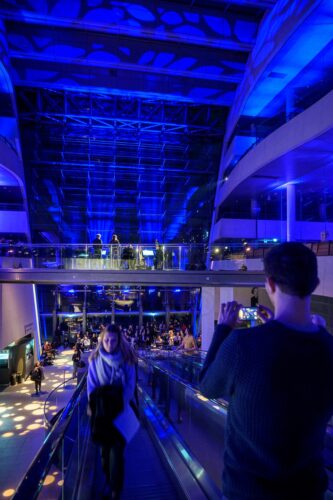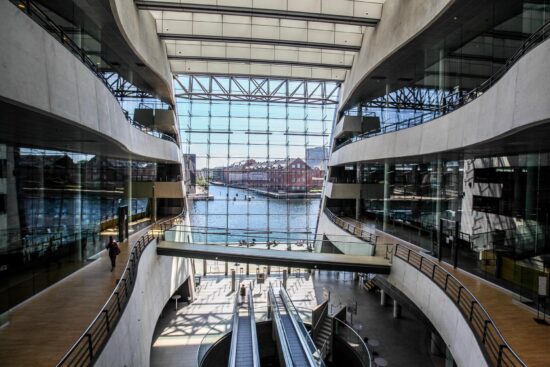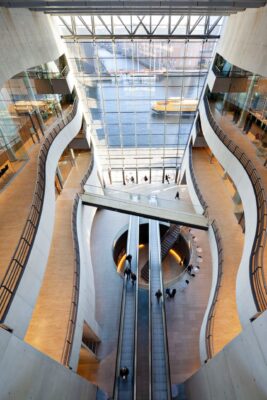Royal Danish Library
The visit to the Royal Danish Library is a stop you must take before leaving Slotsholmen. The Royal Danish Library lies on the southeast side of Christiansborg Palace right after the oasis of Bibliotekshaven (Library Garden). Even if you don’t have time for a visit to the Royal Danish Library, just a stroll through its peaceful 1920s garden and its small pond can be invigorating.
The garden is a small oasis in the middle of the city and attracts many visitors all year round. Only the shallow basin in the middle of the garden reveals that there was once a harbor at this place. Today, the garden is characterized by flowering beds and large shady trees. However, the silence is temporarily broken when the new water sculpture in the middle of the central basin spits out cascades of water at every hour of the day.
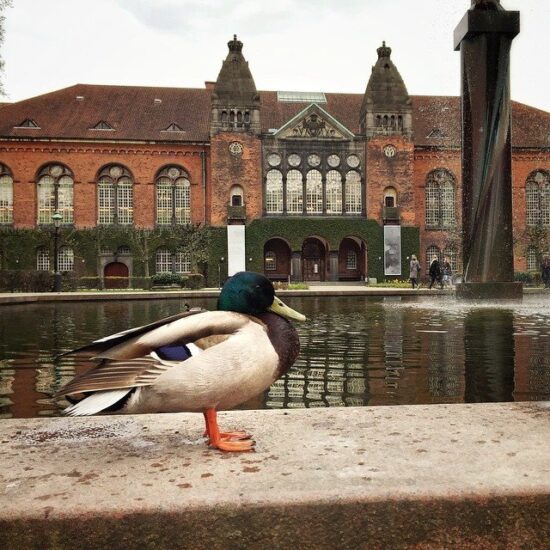
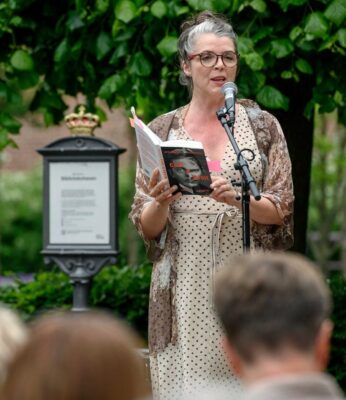
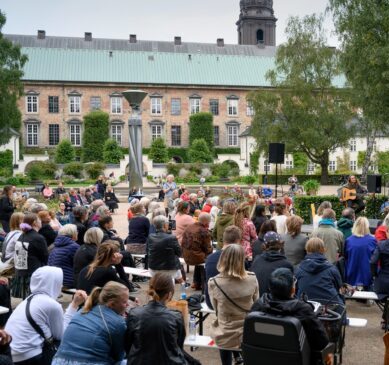
The garden and the pond with its eight-meter-high copper column that serves as a fountain lie in front of the old library building constructed from 1898 to 1906 by the Danish architect Hans J. Holm. After numerous sketches, Holm finally designed a building in his preferred early Renaissance, northern Italian style with some Venetian touch on its details. Red brick dominates its exterior, and sandstone and granite pyramid spikes.
Holm’s building is not however the most impressive part of the Royal Library. Its adjacent modern counterpart is one of the most striking new structures in Denmark. The “Black Diamond” was designed as the waterfront extension of the old building in the early 1990s by the Danish architects Schmidt, Hammer, and Lassen.
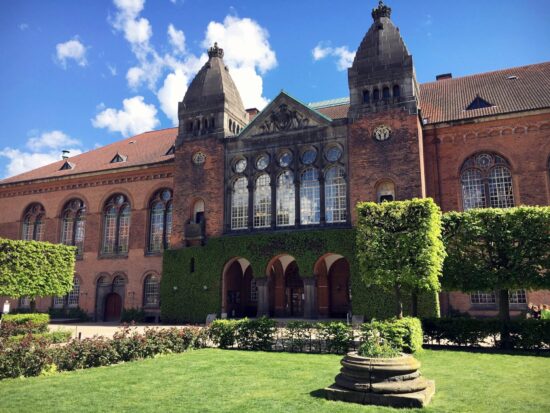
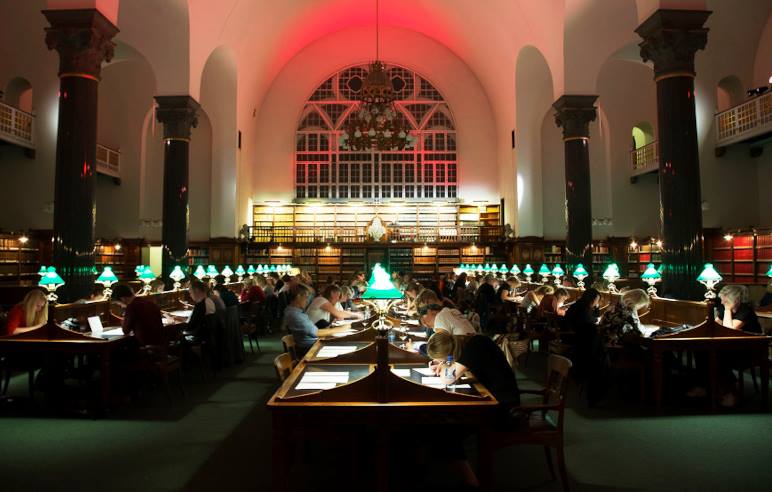
Its modern form and materials are a deliberate contrast to the old building. The facade consists of 2,500 square meters of absolute black granite, extracted in Zimbabwe, cut, and polished in northern Italy. Each stone weighs 75 kg. It is 20,733 square meters in total with 450 rooms spread over eight floors.
The name refers to the prismatic sharp edges and the black marble plates. It also refers to the glass of the exterior, that reflects the water of the harbor. From the wave-like balconies of the central foyer, which cuts into the building as a 24-meter-high atrium, there is a panoramic view over the harbor.
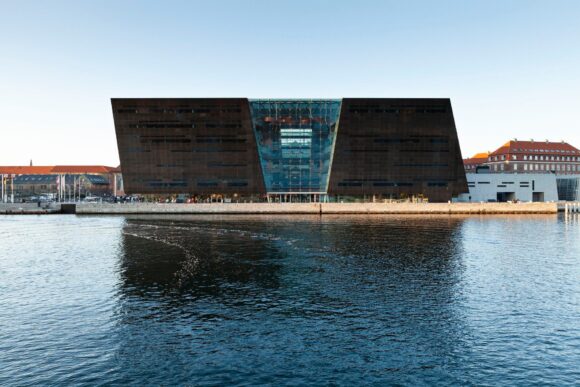

The variety of cultural activities of the new building has turned The Royal Library into a central cultural center of Copenhagen. An integral part of the harbor promenade.
The seven stories of the building contain not only traditional library functions such as the four new reading rooms but also a concert hall, exhibition galleries, bookshop, café, and restaurant. The ceiling of the bridge between the old and the new is decorated by the Danish artist Per Kirkeby. The old building of The Royal Library a Jewish museum has been designed by Daniel Libeskind in 2004 with sloping floors and a light wooden interior. More
